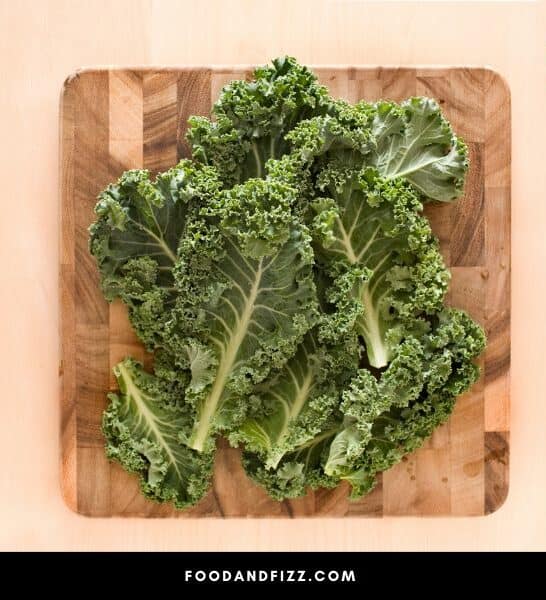You might be wondering why kale is an essential part of your diet. Well, this leafy green vegetable has more benefits than you could fathom. Kale has numerous benefits, including calcium, Vitamins A, C, K, and B6, potassium, manganese, and copper.
With the above mentioned minerals and nutrients, kale has been considered essential in ensuring better immunity, eye health, and bone strength. It also helps in the prevention of cancer and heart diseases.
How Much Does Kale Weigh?
A big-size kale leaf weighs about 67 grams. However, the weight varies depending on the size of the leaf. As such, the weight could range from 45 to 70 grams. Besides, kale weight also depends on whether it has been dried. A dry kale leaf is lighter than a freshly plucked kale leaf.
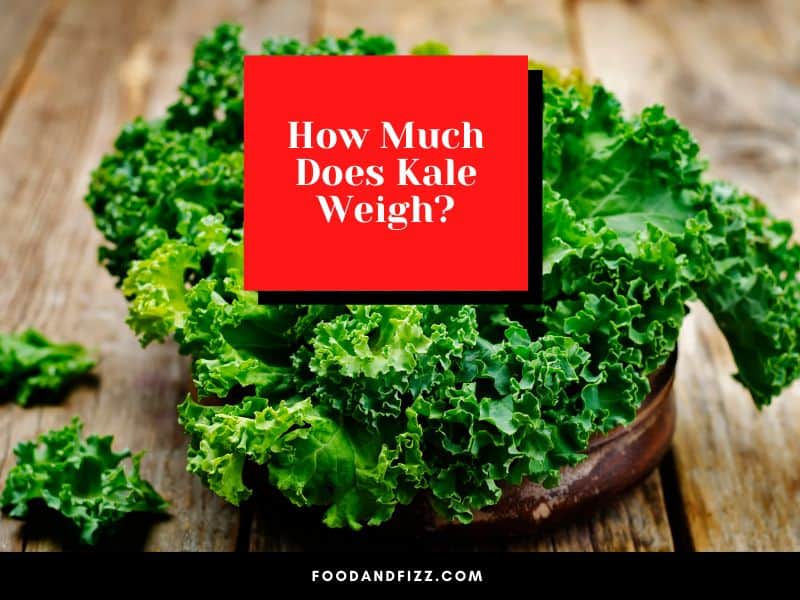
What Influences Kale Weight?
How much kale weighs depends on several factors. As such, it is possible to measure the weight of a single leaf and find it differs depending on the leaf condition. Some of the reasons why there is a difference in the weight of kale leaves include;
- Size: There are large, small, and medium size kale leaves. As such, it is factual that the leaves will have varying weights. The weight range based on size is between 45 and 70 grams.
- Chopped: Whether kale is chopped or not determines how much it weighs. When chopped, a kale leaf is likely to weigh lesser than when whole. That’s probably because of the air spaces in between the chopped kale.
- Dryness: The weight of kale leaves is also determined by how dry a leaf is. Dry leaves are lighter than freshly plucked leaves. That’s because dry leaves have lost some water, thus weighing lighter.
- Raw or Cooked: A raw leaf would weigh more than a cooked one. That’s because it will release some water, evaporating into the air. Nevertheless, the difference in weight is negligible.
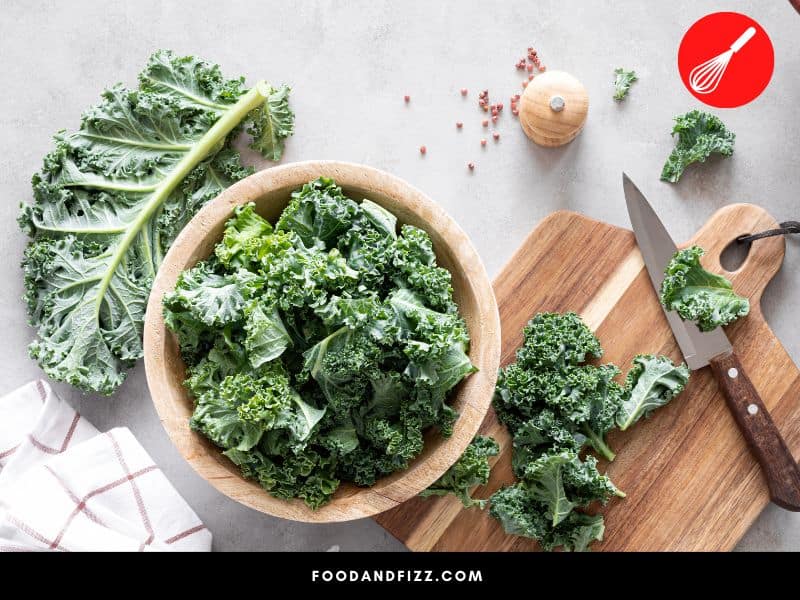
How Heavy is a Bunch of Kales?
A bunch is a grouping of similar things into one big unit, which could have any specific number of items. The number of pieces in a bunch could differ based on item type, region, market, individual preference, etc. As such, there is no standard amount of items in a butch.
A bunch of kales could comprise five to twenty leaves, depending on the above-mentioned factors. Therefore, considering that the average size of one big kale leaf is about 67 grams, then the weight of a bunch of kale could range from 335 grams to 1,340 grams.
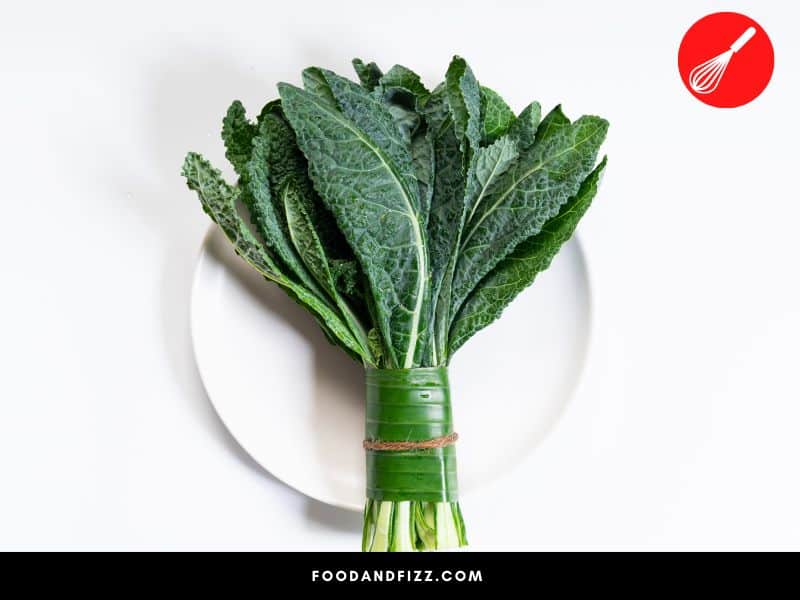
How Many Grams is a Handful of Kales?
A handful of kale is generally considered to equal a cup of kale. Although it’s hard to state the exact weight of a cup of kale, a cup of kale weighs approximately 67 grams among most people. According to experts, eating two to three cups of kale daily is healthy.
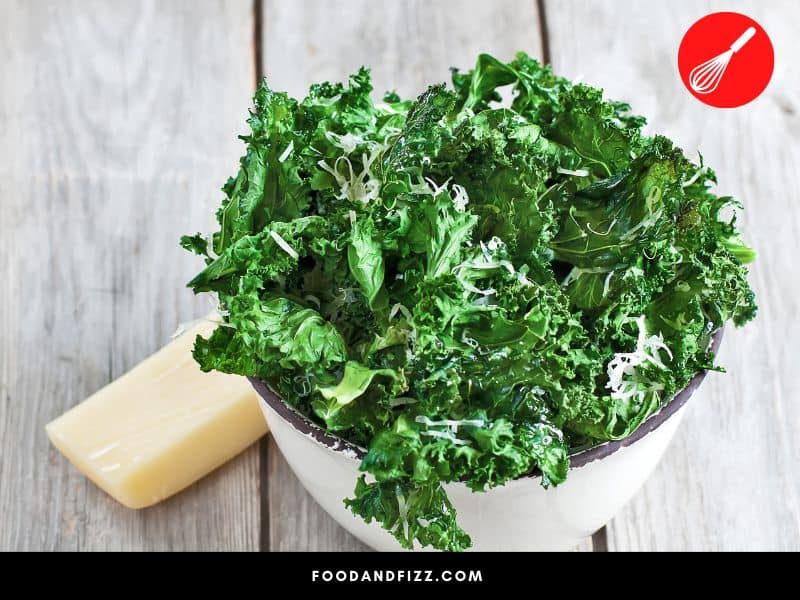
How Many Grams of Kale Do I Need to Make Smoothies?
The amount of kale you put in your smoothies is dependent on the amount of juice you want to make. The more juice, the larger the number of kales. However, for 500 mL to 750 mL of smoothies, using two handfuls or two cups of kale is appropriate. That means you will have consumed about 134 grams of kale.
What Is the Nutritional Content of One Leaf of Kale?
A huge fresh leaf of kale weighs approximately 67 grams. Inside the leaf, numerous minerals and nutrients are significant to the body. However, the nutrients and minerals vary in amount. The amount of each mineral and nutrient content in a kale leaf is as follows.
- Vitamin C – 19 mg,
- Beta Carotene – 2,035 mcg,
- Iron – 1.0 mg,
- Potassium – 165 mg,
- Energy – 42.0 g,
- Protein – 3.5 g,
- Vitamin A – 172 mcg,
- Zinc – 0.3 mg,
- Sodium – 18.9 mg,
- Vitamin K – 494 mcg,
- Phosphorous – 49.6 mg,
- Vitamin E – 2 g,
- Manganese – 0.6 mg,
- Magnesium – 29.5 mg,
- Copper – 1.1 mcg,
- Fiber – 4.5 g,
Health Benefits of Eating Kales
Kales are some of the healthiest vegetables you can eat. The green leafy vegetable has several nutrients and minerals essential to one’s health. Some of the advantages of eating kales include;
- Immunity: Kales are known for their ability to boost body immunity. That’s particularly so due to the presence of nutrients such as beta-carotene, vitamin C, and vitamin E, which are excellent in supporting the immune system.
- Prevents Heart Diseases: The presence of nutrients and minerals such as potassium in kales has helped improve blood pressure and management of body cholesterol. High blood pressure and cholesterol in blood veins could lead to heart diseases.
- Bone Health: Kales contain minerals and nutrients such as calcium, vitamin K, and oxalate, essential components in strengthening the bones.
- Weight Loss: Most people struggle with weight gain. However, with a daily diet that includes about two cups of kale, it is possible to manage your weight to acceptable levels.
- Blood Clotting: If you have hemophilia, which means your blood doesn’t clot, then eating kales may be one of the best things to do for yourself. That’s because kales contain vitamin K, which is critical in ensuring blood clots.
How Can I Eat Kales?
There are several ways you can choose to have kales in your diet. Some of the best techniques are;
- Eating your kale cooked and without mixing them with anything else.
- Mixing the kale with other foods such as spaghetti.
- Making smoothies using a mixture of kale and other vegetables and fruits.

Frequently Asked Questions To How Much Does Kale Weigh?
How Many Kales Should I Eat Daily?
The number of kale leaves you to eat every day should have an average weight of about 200 grams. That translates to about three cups of kales or three huge kale leaves.
What Should I Understand With a Cup of Kale?
A cup of kale, for most people, has been interpreted to mean kale amounting to approximately 67 grams. That is a representation of one big kale leaf.
Which is the Best Time for Me to Eat Kales?
You can eat kales any time of the day, and you will be okay. In fact, it is advisable to eat a cup of kales at every meal since they help in the digestion process.
Conclusion to How Much Does Kale Weigh?
The weight of kale would depend on the size of the leaf and whether the leaves are fresh or dried. In general, dried kale leaves are lighter than freshly picked kale leaves. On average, kale leaves weigh between 45-70 grams.

